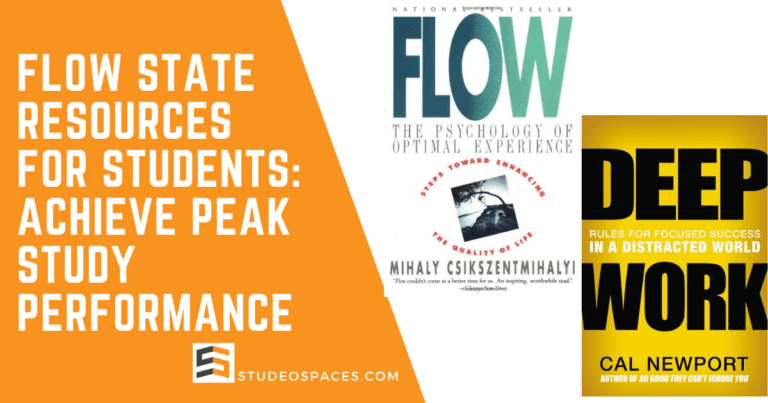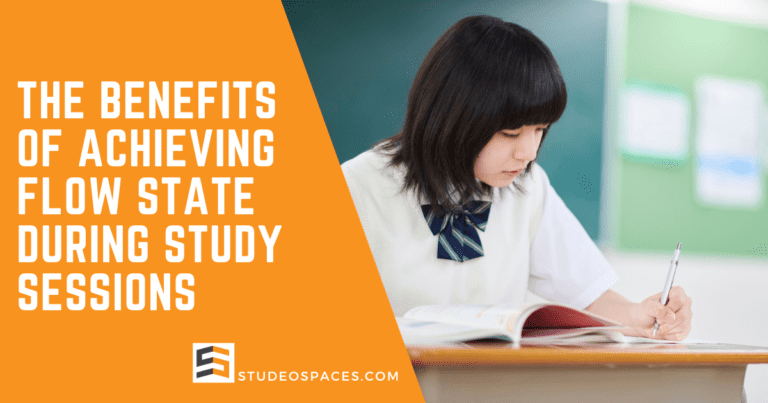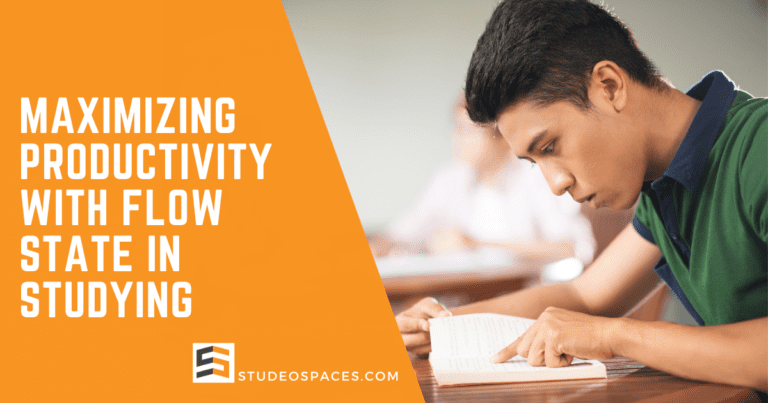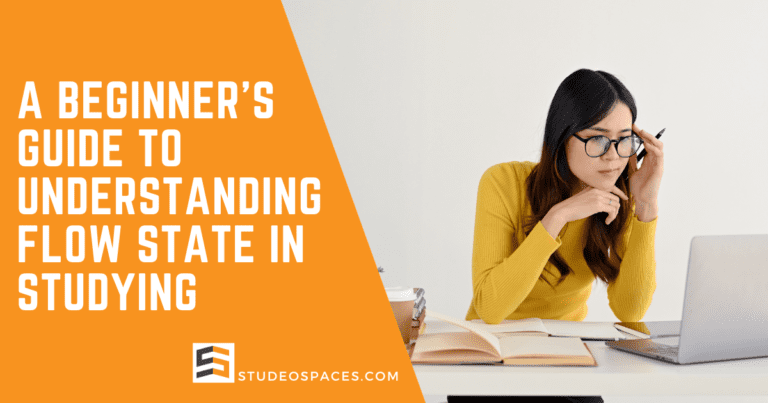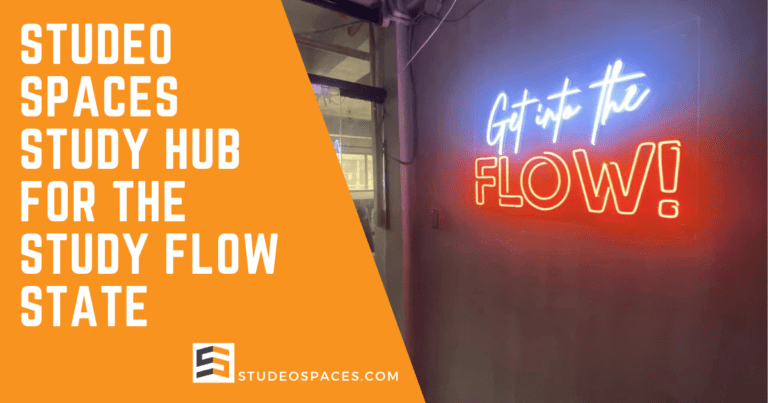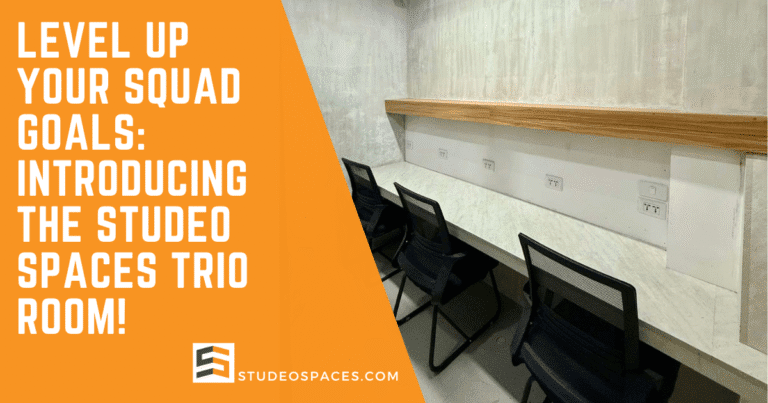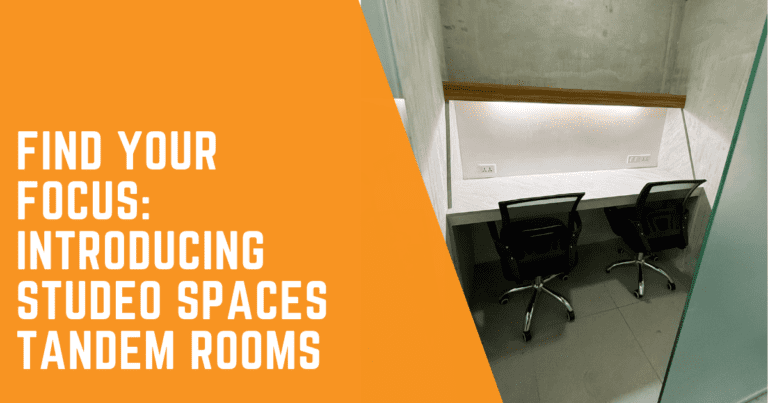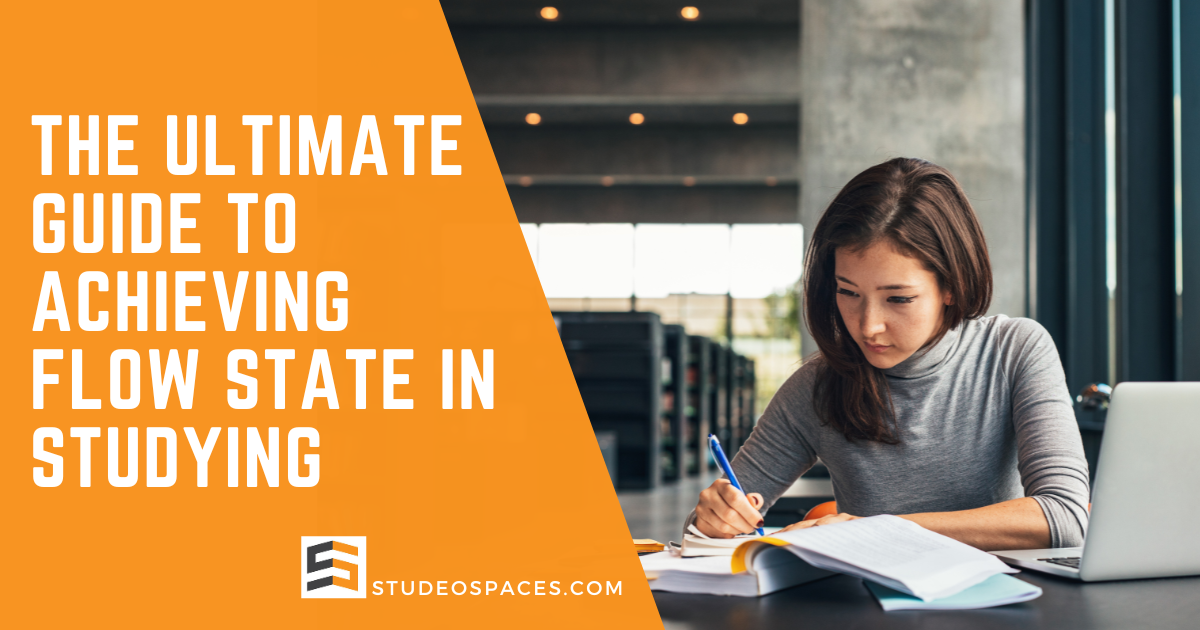
In “The Ultimate Guide To Achieving Flow State In Studying,” readers are provided with tried-and-true strategies to help them reach that sweet spot of productivity, where the focus is laser-sharp and time flies unnoticed. Flow states that almost magical conditions where tasks seem effortless and enjoyable are not just for athletes and artists but very much attainable for students, too. Techniques such as setting clear goals, minimizing distractions, and leveraging one’s natural rhythms are explored to help students maximize their study efficiency.
Following these insights can transform studying into an engaging and highly productive activity. The Studeo Spaces Study Hub location in Manila offers an unparalleled sanctuary for those seeking an optimal environment to foster this state. It blends tranquility with focused energy, perfectly crafted to help students hit their stride and excel academically. “Get Into the Flow” is more than just a tagline here; it’s a promise of the transformative experience awaiting within its walls.
Do you ever find yourself struggling to concentrate while studying? Achieving that perfect state where everything clicks, and learning seems effortless might seem elusive. This guide will help you unlock the secret to achieving the flow state in your studies, ensuring you can maximize your productivity and absorb information like never before.
Understanding Flow State
A flow state, often described as “in the zone,” is a mental state in which an individual is fully immersed and focused on the task. Everything else seems to fade away in this state, leaving you engrossed in what you’re doing. As a result, you perform tasks more effectively and feel a sense of enjoyment and accomplishment.
Characteristics of Flow State
Flow state is marked by several key characteristics that make it such a desirable state for students and professionals alike:
- Complete Concentration: Your focus is undivided.
- Clarity of Goals and Immediate Feedback: You know what you must do and how well you do.
- Transformation of Time: The perception of time either speeds up or slows down.
- Intrinsic Enjoyment: The task becomes its own reward.
The Science Behind Flow State
Flow state is deeply rooted in psychology and neuroscience. When you’re in flow, your brain releases neurochemicals like dopamine, norepinephrine, and endorphins. These chemicals enhance focus, pleasure, and motivation, creating the ideal conditions for learning and productivity.
Setting the Stage for Flow
Achieving the Flow State is not purely accidental; it requires a conducive environment and mindset. Here’s how you can set the stage effectively:
Choosing the Right Environment
Your surroundings play a crucial role in your ability to concentrate. A cluttered or noisy environment can be severely distracting. Ensure your study space is tidy and quiet and can provide a sense of calm.
Minimizing Distractions
Distractions can take many forms, including smartphones, social media, noise, and even people. Minimizing these distractions is critical. Turn off non-essential notifications, use apps like Focus@Will to block distracting sites, and tell others you need uninterrupted time.
Setting Clear Goals
Knowing your aim in each study session helps direct your focus. Rather than a vague plan, set specific, attainable goals. For instance, instead of planning to “study biology,” decide to “review Chapter 5 of the biology textbook and solve practice questions.”
Techniques to Enter the Flow State
Various study techniques can help you achieve flow while studying. Let’s delve into some of the most effective methods.
Pomodoro Technique

The Pomodoro Technique involves studying for 25 minutes and a 5-minute break. This method can help maintain high levels of focus by avoiding burnout. After completing four cycles, take a longer break of 15-30 minutes.
Visualization
Visualization involves mentally rehearsing what you’re about to study. Close your eyes and envision yourself successfully completing the tasks. This boosts confidence and sets a positive tone for your session.
Mindfulness and Meditation
Mindfulness techniques, including meditation, help increase concentration and reduce stress. Practicing mindfulness can train your brain to focus better and easily enter the flow state.
Active Learning
Engage actively with the material you are studying—use flashcards, teach the material to someone else, or apply the information in practical scenarios. Active learning helps you retain information better and keeps you engaged.
Maintaining Flow State
Once you achieve flow, it’s essential to maintain it to get the best results. Here’s how you can do that:
Staying Hydrated and Nourished
Your brain functions best when it’s well-hydrated and nourished. Drink water regularly and eat balanced meals that provide steady energy without causing sharp spikes and crashes in blood sugar.
Regular Breaks
Taking regular breaks can help prevent mental fatigue. However, these breaks mustn’t interrupt your flow. Use them to briefly relax and recharge before diving back into your task.
Positive Reinforcement
Reward yourself for reaching milestones. This could be as simple as a five-minute break, a small treat, or even a brief walk outside. Positive reinforcement trains your brain to associate the flow state with rewards, making it easier to achieve in the future.
Pitfalls to Avoid
While striving for flow, it’s crucial to be aware of common pitfalls that can hinder your progress:
Multitasking
While multitasking may seem like it can make you more productive, it divides your focus and hinders your ability to reach a flow state. Focus on one task at a time to maintain high concentration levels.
Lack of Preparation
Entering a study session without proper preparation can make it challenging to achieve flow. Ensure all your materials are ready before you start and have a clear plan for what you need to accomplish.
Overexertion
Pushing yourself too hard can lead to burnout, making it difficult to enter flow. Listen to your body and mind—take breaks when needed, and avoid studying for excessively long periods without rest.
Case Studies and Practical Applications
Learning from real-life examples can provide valuable insights and inspiration. Here are some instances of how individuals have successfully achieved flow state while studying:
Case Study 1: Jane’s Night Study Sessions
Jane was a night owl who struggled to focus during her late-night study sessions. She consistently achieved flow by creating a dedicated study space in a quiet Study Hub, using noise-canceling headphones, and practicing mindfulness before starting. Her grades improved, and she felt more confident and less stressed.
Case Study 2: Mark’s Use of the Pomodoro Technique
Mark was overwhelmed with the amount of study material before his exams. He decided to try the Pomodoro Technique, breaking his study sessions into manageable chunks. This approach enhanced his concentration and prevented burnout, leading to better retention and understanding of the material.
Practical Application: Group Study Sessions
Achieving a flow state isn’t limited to individual study sessions. Group study can also be highly effective. Choose study partners who are equally focused and motivated, set clear goals, and create an environment conducive to concentration. This collaborative approach can provide different perspectives and enhance understanding.

Leveraging Resources
Various tools and resources can aid you in achieving and maintaining flow. Here are some recommendations:
Tools and Technologies
- Focus@Will: A music service scientifically optimized to improve concentration.
- Forest App: A time management app that helps you stay focused by growing virtual trees as you work.
- Notion: An all-in-one productivity tool that can organize tasks, notes, and schedules, keeping you on track.
Books and Articles
- “Flow: The Psychology of Optimal Experience” by Mihaly Csikszentmihalyi: A seminal book on the concept of flow, providing deep insights into achieving this state.
- “Mindfulness for Beginners” by Jon Kabat-Zinn: An excellent resource for integrating mindfulness techniques into your study routine.
Pulling It All Together: Creating a Flow-Inducing Study Schedule
Creating a study schedule that promotes flow can help you achieve consistent success. Here’s how to design one:
Assess Your Peak Productivity Times
Identify the times of day when you are most alert and focused. Schedule your most challenging tasks during these peak periods.
Integrate Techniques
Incorporate the techniques discussed earlier—like the Pomodoro Technique, visualization, and mindfulness—into your schedule. Balance-focused study sessions with regular breaks to maintain high concentration levels.
Review and Adjust
Review your study schedule regularly to determine what works best for you. Adjust it as needed to optimize your productivity and maintain flow.

The Physical Setup: Creating an Optimal Study Environment
Ensuring your physical setup is conducive to achieving the flow state is equally important. Here are some practical tips:
Ergonomic Furniture
Using ergonomic furniture can help prevent physical discomfort, allowing you to focus better. Invest in a good chair and desk setup that promotes good posture.
Lighting
Good lighting is crucial. Natural light is ideal, but if that’s not possible, use a combination of ambient and task lighting to reduce eye strain and maintain alertness.
Personal Touches
Add personal touches to your study space, such as plants, motivational quotes, or calming artwork. These elements can make your study environment more pleasant and conducive to focus.
Final Thoughts: The Long-Term Benefits of Achieving Flow
Achieving the flow state while studying has long-term benefits beyond immediate academic success. These include:
- Improved Retention: Information absorbed in a flow state is often retained better.
- Increased Efficiency: You can accomplish more in less time.
- Enhanced Enjoyment: Studying becomes a pleasurable activity rather than a chore.
- Reduced Stress: A focused mind is less likely to be overwhelmed by distractions and anxiety.
By consistently applying the strategies and techniques discussed in this guide, you can foster an environment and mindset conducive to achieving flow. However, a dedicated space like a study hub that promotes concentration and productivity can make a significant difference for those seeking an extra edge.
Studeo Spaces Study Hub: Your Gateway to Flow State
At Studeo Spaces Study Hub, we believe in creating a space that fosters a state of hyper-productivity and concentration known as the “Flow State.” Located in Sampaloc, our premier destination is designed specifically to help individuals unleash their focus and unlock their full potential.
Our mission at Studeo Spaces Study Hub is to provide a supportive environment where students and professionals can escape distractions and elevate their studies or work. We understand the importance of creating a space that promotes peak performance and productivity.
Unlike traditional co-working spaces, Studeo Spaces Study Hub is meticulously designed to cater to those seeking an optimal atmosphere for studying or working. Our goal is to help individuals achieve their goals and reach a state of flow where they can immerse themselves fully in their tasks.
Our tagline, “Get Into the Flow,” encapsulates our commitment to helping individuals achieve a state of hyper-focus and productivity. Whether preparing for exams or looking to enhance your professional performance, Studeo Spaces Study Hub provides the perfect environment for you to thrive.
By leveraging a space to eliminate distractions and promote focus, you can unlock your full potential and achieve the flow state necessary for exceptional test and examination results. Join us at Studeo Spaces Study Hub and experience the difference for yourself.
In conclusion, achieving the flow state while studying is a powerful tool to transform your academic experience. You can unlock unparalleled levels of focus and productivity by understanding the science behind it, setting the right stage, applying effective techniques, and leveraging specialized environments like Studeo Spaces Study Hub. Happy studying!
Please check out the Studeo Spaces Study Hub Official Website and follow the Studeo Spaces Study Hub Facebook Page and Studeo Spaces Study Hub TikTok Channel for announcements, news, and updates.
Studeo Spaces Quick Links
- Book a Desk / Room
- Location
- Rates
- Features and Amenities
- Business Hours
- Private Rooms
- Latest News
Stay Connected
- Facebook: https://www.facebook.com/StudeoSpaces
- Tiktok: https://www.tiktok.com/@studeospaces
- Youtube: https://www.youtube.com/@StudeoSpaces
